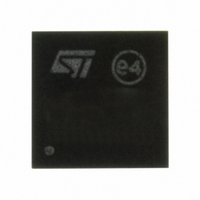PM6670AS STMicroelectronics, PM6670AS Datasheet - Page 28

PM6670AS
Manufacturer Part Number
PM6670AS
Description
IC CTLR DDR2/3 MEM PS VFQFPN-24
Manufacturer
STMicroelectronics
Datasheet
1.PM6670ASTR.pdf
(53 pages)
Specifications of PM6670AS
Applications
Memory, DDR2/DDR3 Regulator
Current - Supply
800µA
Voltage - Supply
4.5 V ~ 28 V
Operating Temperature
-40°C ~ 85°C
Mounting Type
Surface Mount
Package / Case
24-VFQFN, 24-VFQFPN
For Use With
497-8412 - BOARD EVAL PM6670AS DDR2/3497-8411 - BOARD EVAL PM6670S DDR2/3
Lead Free Status / RoHS Status
Lead free / RoHS Compliant
Available stocks
Company
Part Number
Manufacturer
Quantity
Price
Company:
Part Number:
PM6670ASTR
Manufacturer:
ST
Quantity:
2 307
Company:
Part Number:
PM6670ASTR
Manufacturer:
STMicroelectronics
Quantity:
10 000
Part Number:
PM6670ASTR
Manufacturer:
ST
Quantity:
20 000
Device description
7.1.3
28/53
Pulse-skip and no-audible pulse-skip modes
High efficiency at light load conditions is achieved by PM6670AS entering the pulse-skip
mode (if enabled). When one of the two fixed output voltages is set, pulse-skip power saving
is a default feature. At light load conditions the zero-crossing comparator truncates the low-
side switch on-time as soon as the inductor current becomes negative; in this way the
comparator determines the on-time duration instead of the output ripple (see
Figure 31. Inductor current and output voltage at light load with pulse-skip
As a consequence, the output capacitor is left floating and its discharge depends solely on
the current drained from the load. When the output ripple on the pin COMP falls under the
reference, a new shot is triggered and the next cycle begins. The pulse-skip mode is
naturally obtained enabling the zero-crossing comparator and automatically takes part in the
COT algorithm when the inductor current is about half the ripple current amount, i.e.
migrating from continuous conduction mode (C.C.M.) to discontinuous conduction mode
(D.C.M.).
The output current threshold related to the transition between PWM mode and pulse-skip
mode can be approximately calculated as:
Equation 20
At higher loads, the inductor current never crosses zero and the device works in pure PWM
mode with a switching frequency around the nominal value.
A physiological consequence of pulse-skip mode is a more noisy and asynchronous (than
normal conditions) output, mainly due to very low load. If the pulse-skip is not compatible
with the application, the PM6670AS, when set in adjustable mode-of-operation, allows the
user to choose between forced-PWM and no-audible pulse-skip alternative modes (see
4.1.4 for details).
No-audible pulse-skip mode
Some audio-noise sensitive applications cannot accept the switching frequency to enter the
audible range as is possible in pulse-skip mode with very light loads. For this reason, the
PM6670AS implements an additional feature to maintain a minimum switching frequency of
33 kHz despite a slight efficiency loss. At very light load conditions, if any switching cycle
Inductor
Inductor
current
current
VDDQ
VDDQ
Output
Output
V
V
reg
reg
T
T
ON
ON
T
T
OFF
OFF
I
LOAD
Doc ID 14436 Rev 2
(
PWM
T
IDLE
2
Skip
)
=
V
IN
2
−
⋅
V
L
OUT
⋅
T
ON
Figure 31
PM6670AS
t
).













